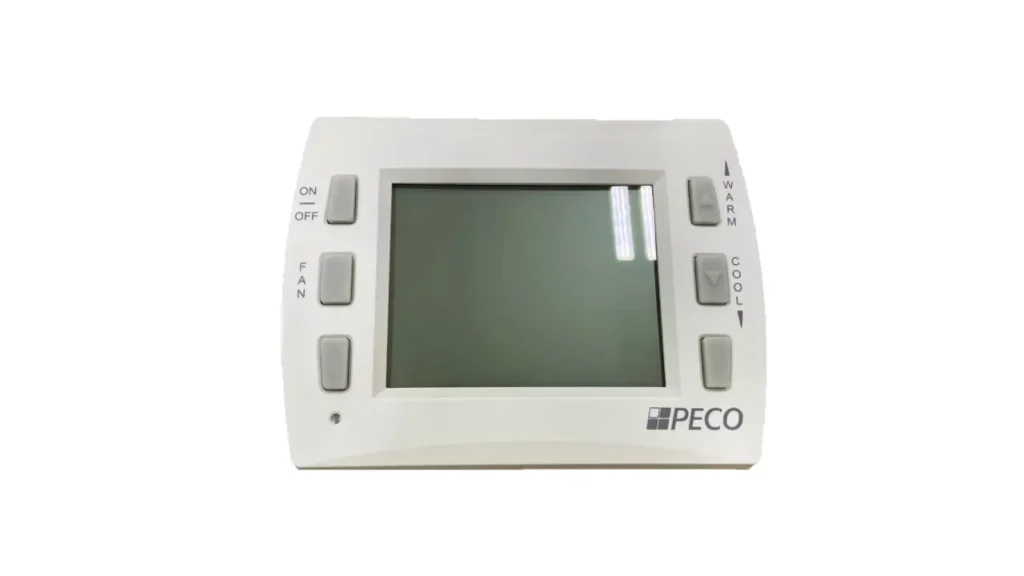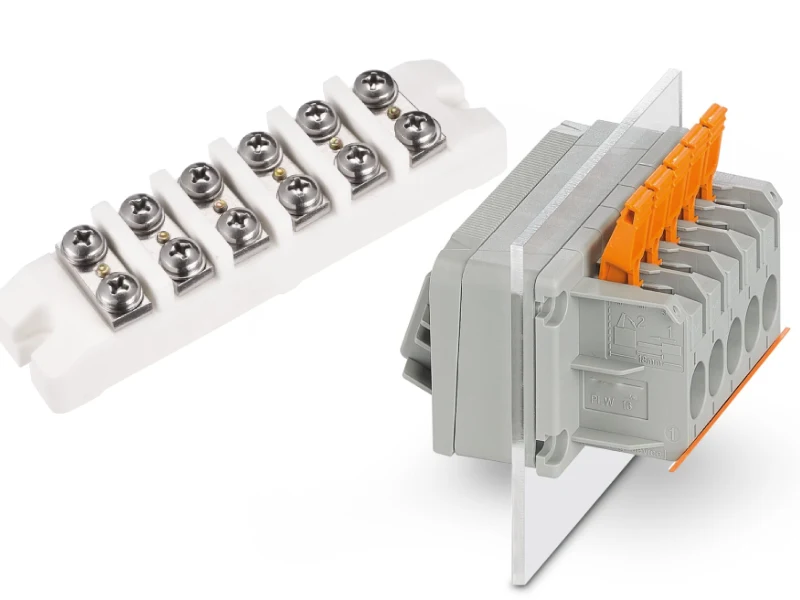Maintaining a comfortable and healthy indoor environment involves more than just temperature control. While thermostats are widely known for regulating heat and air conditioning, hygrostats play an equally crucial, yet often overlooked, role in managing humidity. Understanding the distinct functions of these devices is essential for optimizing indoor climate.
This blog post will delve into the core differences between a hygrostat and a thermostat, exploring how each operates, what they control, and why their combined use can lead to superior environmental management in various settings, from homes to industrial enclosures.
What is a Hygrostat

A hygrostat, also known as a humidistat, is a device designed to measure and control the relative humidity within an enclosed space.
Similar to how a thermostat regulates temperature, a hygrostat senses the ambient humidity level and, based on a user-defined setpoint, activates or deactivates connected humidifiers or dehumidifiers to maintain the desired moisture conditions. This allows for automated humidity management, crucial for comfort, preserving sensitive materials, preventing mold growth, and ensuring the optimal operation of various systems.
Hygrostat Uses
Hygrostats play a vital role in maintaining optimal humidity levels across a variety of environments, ensuring comfort, preserving goods, and protecting sensitive equipment. Their applications are diverse and crucial for preventing issues associated with either excessively high or low moisture.
Common uses of hygrostats include:
Residential comfort: Controlling whole-house humidifiers or dehumidifiers to prevent dry skin, respiratory issues, mold growth, and static electricity.
Industrial and commercial settings:
- Protecting sensitive electronics in electrical enclosures and data centers from condensation and corrosion.
- Maintaining ideal conditions in greenhouses for plant growth.
- Preserving historical artifacts, books, and artworks in museums and libraries.
- Ensuring quality control in manufacturing processes, such as in the textile, paper, and printing industries.
- Managing humidity in storage facilities for food, pharmaceuticals, and other hygroscopic materials.
Specialized applications:
- Controlling ventilation in basements and attics to prevent dampness and mold.
- Regulating humidity in medical equipment cabinets and laboratories.
What is a Thermostat?

A thermostat is a control device that measures the temperature of an enclosed space and automatically regulates heating or cooling systems to maintain a desired setpoint.
It works by sensing the ambient temperature and then switching connected equipment, such as furnaces, boilers, or air conditioners, on or off as needed to achieve and hold the programmed temperature, ensuring comfort and energy efficiency.
Thermostat Uses
Thermostats are ubiquitous control devices essential for managing temperature in countless applications, ranging from personal comfort to complex industrial processes. Their ability to automatically regulate heating and cooling systems makes them indispensable for energy efficiency, safety, and maintaining desired environmental conditions.
Common uses of thermostats include:
- Residential and Commercial HVAC: Controlling central heating and air conditioning systems in homes, offices, schools, and other buildings to maintain comfortable indoor temperatures.
- Water Heating: Regulating the temperature of hot water in residential water heaters, boilers, and commercial hot water supply systems.
- Refrigeration and Freezing: Managing temperatures in refrigerators, freezers, and cold storage units to preserve food and other perishable goods.
- Industrial Processes: Controlling temperatures in ovens, furnaces, incubators, kilns, and other industrial equipment where precise thermal regulation is critical for manufacturing, testing, or processing.
- Automotive: Regulating engine temperature in vehicles to ensure optimal performance and prevent overheating.
- Appliances: Integrated into many household appliances like irons, toasters, electric kettles, and washing machines to control heating elements.
- Safety and Protection: Used in various systems to prevent overheating or freezing, such as in fire protection systems or freeze protection for pipes.
Hygrostat vs Thermostat
While both hygrostats and thermostats are crucial for environmental control, they serve distinct purposes by regulating different atmospheric properties. Understanding their unique functions and applications is key to effective climate management.
Purpose of Control
A hygrostat’s primary function is to measure and control the relative humidity of an environment. It detects the amount of moisture in the air and activates or deactivates humidifying or dehumidifying equipment to maintain a specified humidity level. This is critical for preventing issues like mold growth, static electricity, or material degradation caused by improper moisture.
Conversely, a thermostat’s main purpose is to measure and control temperature. It senses the ambient temperature and regulates heating or cooling systems to achieve and maintain a desired thermal setpoint. This ensures comfortable living or working conditions and protects temperature-sensitive equipment or materials.
Measured Parameter
Hygrostats specifically measure relative humidity, which is the ratio of water vapor in the air to the maximum amount of water vapor the air can hold at a given temperature. They are equipped with sensors designed to detect moisture levels accurately.
Thermostats, on the other hand, measure temperature. They typically use bimetallic strips, thermistors, or thermocouples to sense the thermal energy of the surroundings and translate it into an electrical signal.
Controlled Equipment
A hygrostat is typically connected to and controls devices that add or remove moisture from the air. These include humidifiers (to increase humidity) and dehumidifiers (to decrease humidity), or sometimes ventilation systems.
A thermostat connects to and controls heating and cooling systems. This encompasses furnaces, boilers, air conditioners, heat pumps, and electric heaters, effectively managing the thermal output.
Typical Applications
Hygrostats are frequently used in applications where humidity control is paramount. This includes greenhouses, museums, data centers, basements, wine cellars, and industrial processes involving hygroscopic materials like paper or textiles.
Thermostats are widely used in residential and commercial buildings for HVAC control, refrigerators, ovens, industrial machinery, and automotive systems, essentially anywhere temperature regulation is needed for comfort, safety, or process control.
Impact of Malfunction
A malfunctioning hygrostat can lead to significant problems related to humidity. Excessively high humidity can cause mold, mildew, condensation, and corrosion, while very low humidity can lead to static electricity, dry skin, and damage to sensitive materials like wood or certain electronics.
If a thermostat malfunctions, it can result in uncomfortable temperatures, ranging from extreme heat to freezing cold, and potentially lead to energy waste. More critically, it can cause damage to temperature-sensitive equipment or materials, or even pose safety risks in industrial processes where overheating or undercooling is dangerous.
Comparison Table
| Feature | Hygrostat | Thermostat |
| Purpose | Control relative humidity | Control temperature |
| Measured Parameter | Relative humidity (RH) | Temperature |
| Controlled Equipment | Humidifiers, Dehumidifiers, Ventilation | Furnaces, AC units, Heaters, Chillers |
| Typical Applications | Greenhouses, Museums, Data Centers, Basements | Homes, Offices, Refrigerators, Industrial Ovens |
| Impact of Malfunction | Mold, Static, Material damage, Corrosion | Discomfort, Energy waste, Equipment damage |
How to Choose Hygrostat and Thermostat?
Choosing the right hygrostat and thermostat involves careful consideration of your specific needs, the environment you’re controlling, and the equipment you’re connecting them to. Whether it’s for residential comfort or critical industrial applications, selecting the appropriate device ensures optimal performance, energy efficiency, and protection of assets.
For both hygrostats and thermostats, consider factors like the required accuracy, the operating range, and compatibility with your existing systems. It’s also important to think about advanced features such as programmability, smart home integration, and remote control capabilities, which can enhance convenience and efficiency.
When choosing a hygrostat:
- Application: Determine if it’s for residential use (e.g., controlling a whole-house humidifier/dehumidifier) or industrial use (e.g., preventing condensation in electrical panels, preserving materials).
- Accuracy and Setpoint Range: Different applications require varying degrees of precision. Ensure the hygrostat offers the necessary accuracy and a sufficient humidity setting range (e.g., 20-90% RH).
- Control Mode: Decide if you need it to control humidifiers (NC – normally closed contact) or dehumidifiers (NO – normally open contact), or if it needs to switch between both.
- Sensor Type: Understand the type of humidity sensor (e.g., capacitive, resistive) and its suitability for your environment, considering factors like contaminants or extreme conditions.
- Installation and Power: Check the installation method (e.g., wall-mounted, DIN rail, duct-mounted) and power requirements for compatibility.
When choosing a thermostat:
- System Compatibility: Crucially, ensure the thermostat is compatible with your HVAC system’s voltage (low voltage, line voltage), wiring configuration, and heating/cooling stages (single-stage, multi-stage, variable speed).
- Type of Thermostat:
- Manual: Simple on/off and temperature adjustment.
- Programmable: Allows setting schedules for different times/days to save energy.
- Smart/Wi-Fi: Offers remote control via apps, learning capabilities, and integration with smart home systems.
- Temperature Range and Differential: Confirm the operating temperature range meets your needs and consider the switching differential (how much the temperature can deviate from the setpoint before the system activates) for desired comfort or process control.
- Features: Look for features like backlighting, fan control options, filter change reminders, or vacation modes, depending on your preferences and needs.
- Durability and Safety (especially for industrial use): For demanding environments, prioritize robust construction, safety features like overheat protection, and relevant certifications.
Get Wholesale Hygrostat and a Thermostat from Us
When choosing between a hygrostat and a thermostat, the key difference lies in what they control: humidity or temperature. Both are essential for maintaining optimal environmental conditions in various settings, from homes to industrial applications. Understanding your specific needs will guide your selection.
For precise control over either temperature or humidity, Linkwell Electrics offers wholesale thermostats and hygrostats. Their range of products ensures you can find the right device to maintain the ideal climate for your application, whether it’s for comfort, preservation, or operational efficiency.
Ultimately, the choice depends on whether your primary concern is temperature regulation or humidity management. Linkwell Electrics provides reliable and efficient solutions for both, enabling effective environmental control.




